Fr Jeremiah O’Reily OFMCap
And the Early Catholic History of Wellington
Upon arriving in Wellington on 31 January 1843, Fr O’Reily took up lodgings with a Mrs Kennedy somewhere in Cuba Street. He said a public Mass on Sunday 5 February. The unlikely location for this auspicious event was the timber hotel, sometimes simply referred to as a tavern, of the colourful German immigrant, Baron Charles Ernest von Alzdorf. “Shrewd, broad-faced, large bodied ... evidently accustomed to society … great upon the subject of cookery and good living”, Alzdorf entertained his guests near the beach at what is now the corner of Bowen Street and Lambton Quay. This first Mass was well attended, with many Māori among the congregation.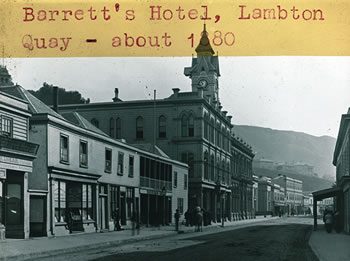
Lively as it was, the Baron’s Wellington Hotel was not entirely suitable. By the middle of March, Wellington’s Catholics had converted a disused store on the beach, on Lambton Quay, into a temporary Mass centre. The need for a permanent church was pressing.
A meeting was held at Barrett’s Hotel, and a ‘Catholic Committee’ was formed. The Committee included Baron Alzdorf, Dr Fitzgerald, Fr O’Reily, Charles Clifford, and other prominent Wellington Catholics. By July, an old house on Hinau Hill, now Boulcott Street, had been secured for conversion into a small church. The building stood almost exactly on the site occupied by St Mary of the Angels today. It must then have been a beautiful spot, just on the edge of the forest. A small stream flowed down the line of Boulcott Street to a shady pool at the present intersection of Manners and Willis Streets, where, according to the later reminiscences of Rangi Te Puni, daughter-in-law of Chief Te Puni, birds from the forest came in great numbers to bathe. In early 1844 Bishop Pompallier visited again, and dedicated the church to the Nativity of the Lord.
In 1846 a small presbytery was built near Mount Street, high on the hillside above the church. Today, Victoria University stands further up the hill. The steep climb from Boulcott Street is still very hard work, and is sometimes referred to by locals as ‘Jacob’s Ladder’. Fr O’Reily made this climb for most of his life. Rejecting the newer presbytery built for him nearer the church as "too grand", Fr O'Reily lived out his days in a converted room off the original chapel.
With a permanent, albeit small church to worship in, attention turned to the need for a school. Bishop Pompallier arranged for the purchase of a plot of land on Boulcott Street in October 1845, but there was not enough money available to build a schoolhouse. Undaunted, Fr O’Reily simply had the sanctuary of the church curtained off during the week, thus allowing classes to be taught in the church itself. This arrangement worked remarkably well, the small Church of the Nativity doubling as a schoolhouse for more than 25 years from December 1847. When Fr O’Reily placed an advertisement in the "New Zealand Spectator" of 4 December 1847, he made it clear that pupils from other denominations were welcome. And indeed, children from Protestant families were among the first pupils. Finally, in 1876, the Marist Brothers opened a school further along Boulcott Street, and this was the precursor of current schools such as Cardinal McKeefry School in the suburb of Wilton.
Fr O’Reily did not restrict his activities to Wellington. In 1844 he joined Bishop Pompallier on a journey to the South Island. On 9 May, he said Mass in the home of the Redwood family at Waimea West in the Nelson district. A devout Catholic, Henry Redwood had brought his young family out from England two years before, and keenly felt the lack of priests in the young colony. O’Reily struck up a relationship with the Redwoods, and tried to visit them each year, on one occasion crossing Cook Strait in an open whale boat. Decades later, after he had become Bishop of Wellington, Francis Redwood recalled what these visits had meant to the family in his childhood. “We venerated [him] almost as an Angel from Heaven”. This was to be the pattern of Fr O’Reily’s ministry. Bad roads, long distances, and terrible weather did not deter him from visiting those who would otherwise be isolated from the sacraments. In 1867, when Fr O’Reily was farewelled as he returned to Europe to try and find more priests and raise funds, Provincial Superintendent Isaac Featherston addressed him saying “I remember well … no matter … how dark the night, the summons to the bedside of the sick and suffering was always promptly responded to by you … the name ‘Father O’Reily’ has long been in this settlement a household word…”

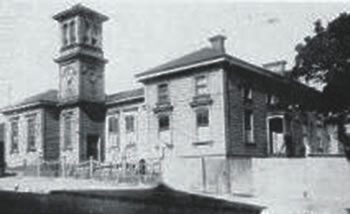
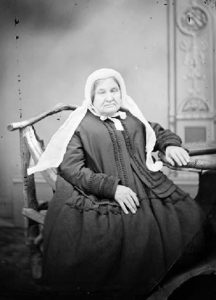
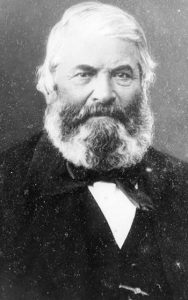
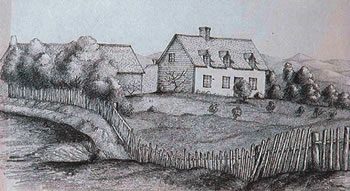
 Entries(RSS)
Entries(RSS)